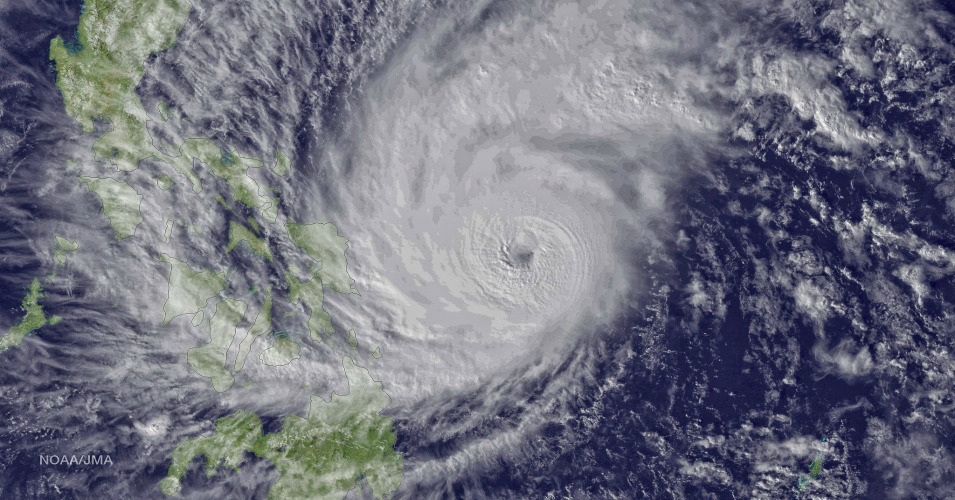Typhoon Hagupit Slams Into Philippines
By Andrea Germanos
07 December, 2014
Commondreams.org

Typhoon Hagupit on 5 December 2014. (Photo: NOAA/JMA)
Typhoon Hagupit slammed into the Philippines on Saturday, bringing torrential rains, threatening catastrophic damage and underscoring the risks brought by storms expected to become more frequent in a warming climate.
Known locally as Typhoon Ruby, Hagupit made landfall in Dolores, Eastern Samar, at 9:15 pm local time with 125 mph winds. The Weather Channel reports that the storm brings "potentially life-threatening winds, storm surge and flash floods."
Meteorologist Jeff Masters writes that "Hagupit is a very large and intense storm, and will be slow to weaken." He adds:
Storm surge damage will be very heavy, as Project NOAH is predicting storm surge heights as high as 4.6 meters (15 feet) on the west side of Samar Island at Catbalogan. High winds will also cause widespread destruction, particularly to crops. However, the greatest danger from the storm may come from its rains. Hagupit's slow forward speed will allow torrential rains to fall for a long period of time, and widespread rainfall amounts of 10 - 15 inches are likely, with some mountainous areas receiving 15 - 25 inches. Since Hagupit is likely to track very close to the capital city of Manila as a strong tropical storm or weak Category 1 typhoon, heavy rains of 10 - 15" could affect this heavily populated part the country resulting in yet another billion-dollar typhoon disaster for the Philippines.
Over half a million people were evacuated in advance of the storm's arrival.
Among those seeking shelter are residents from Tacloban, which was devastated by Typhoon Haiyan in November 2013.
"People are very, very nervous," Idalia Amaya, the acting program manager for Catholic Relief Services’ shelter program in Tacloban, told the New York Times. "It’s just after the one-year anniversary, so people are very traumatized. So they’re taking it very seriously. A lot of families lost loved ones, and everyone was impacted."
Thirty-six-year old Alma Gaut, who lost her mother in Haiyan, spoke to Agence-France Presse from a shelter in Talcoban. "We are afraid. People are panicking," she said.
The storm hits as negotiators are in the midst of UN climate talks in Lima, Peru.
Naderev "Yeb" Saño, one of the Philippine's Climate Change Commissioners and one of the participants in a recent a 40-day climate walk through the country, underscored the connection between extreme storms and climate in a powerful address last year to the UN Climate Change Conference in Poland. He said: "We can take drastic action now to ensure that we prevent a future where supertyphoons become a way of life, because we refuse, as a nation, to accept a future where supertyphoons like Haiyan become a way of life."
"We refuse to accept that running away from storms, evacuating our families, suffering the devastation and misery, counting our dead become a way of life. We simply refuse to," Saño said at the time.
Professor Joanna Haigh, Co-Director of the Grantham Institute, Imperial College London, issued a statement Saturday "connecting the dots" as well.
"Although it’s difficult to attribute the influence of climate change to any specific typhoon, it is likely that storms will intensify in a warmer climate," she stated.
"Rising ocean temperatures drive up the intensity of typhoons, meaning that the strongest storms are likely to get stronger, and the typhoon season seems to be getting longer," Haigh added. "Rising sea levels caused by climate change also exacerbate the effect of typhoon storm surges, leading to more flooding. In low-lying countries like the Philippines, which is particularly affected by sea-level rise, this is a major problem," she said.
As the impacts of the storm continue, Twitter users are following the developments with the hashtags #Hagupit and #RubyPH:
.
Comments are moderated

